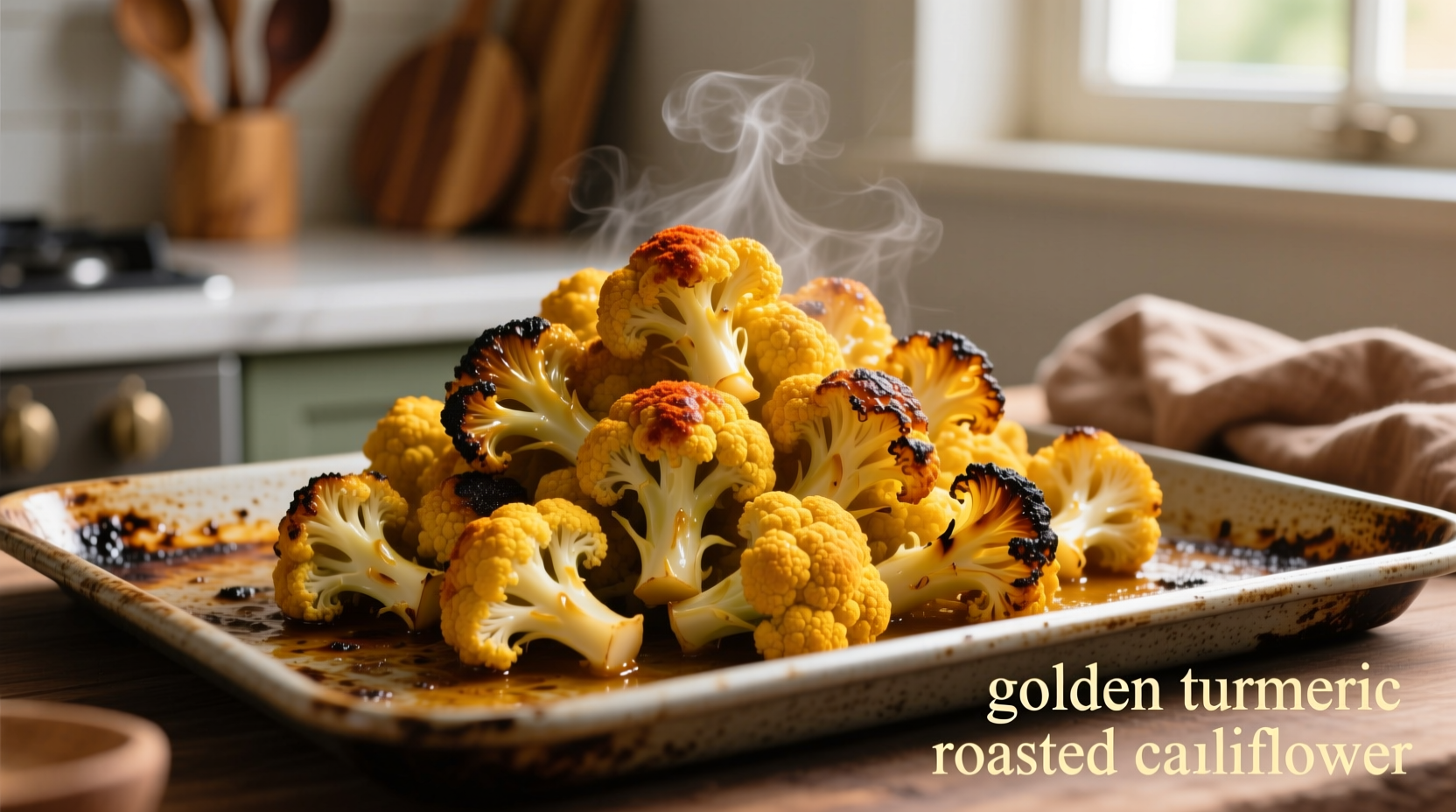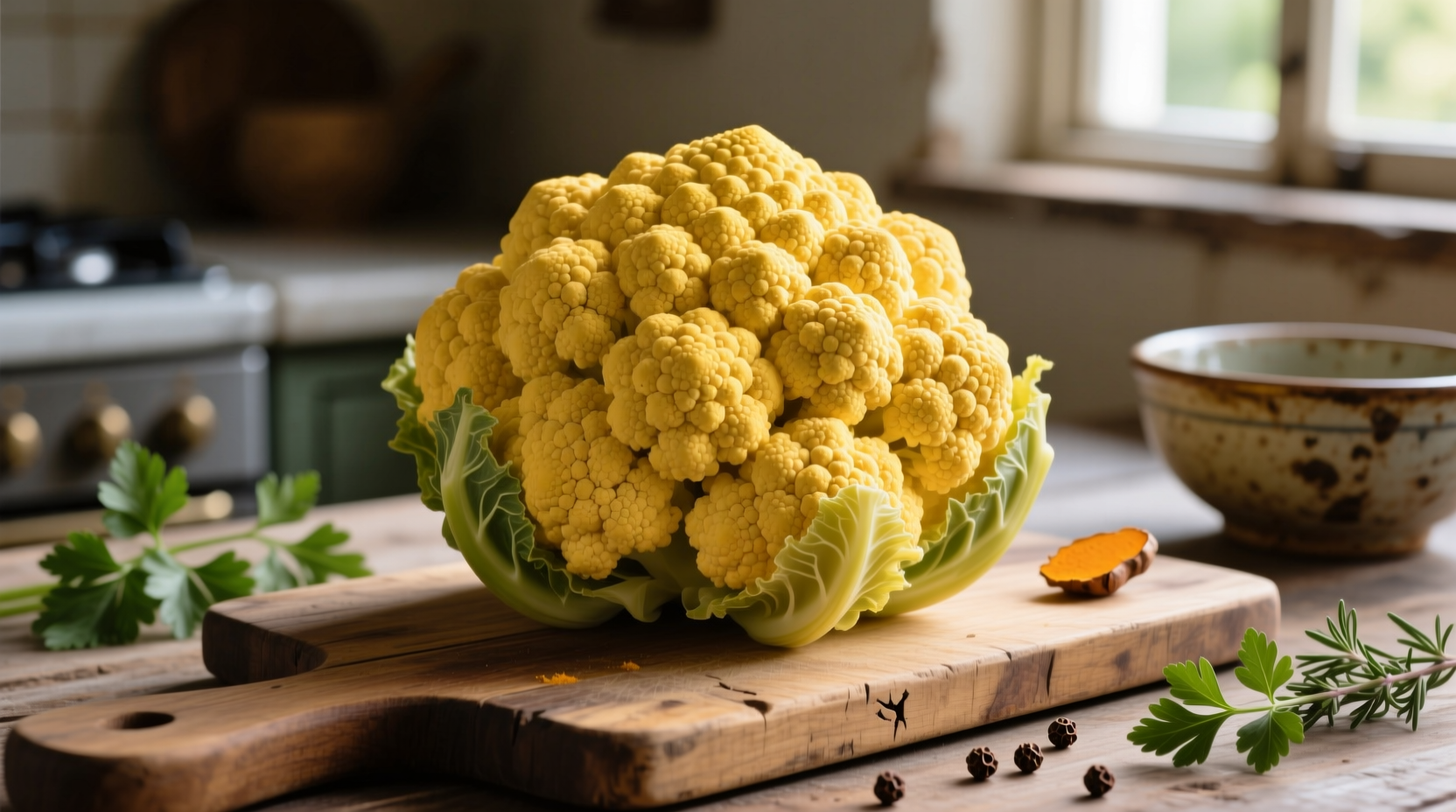The Science Behind This Perfect Pairing
Understanding why turmeric and cauliflower work so well together requires examining both culinary chemistry and nutritional science. Cauliflower's neutral pH and mild sulfur compounds create an ideal canvas for turmeric's earthy, slightly bitter curcuminoids. When exposed to heat, cauliflower's natural sugars caramelize while reacting with turmeric's polyphenols to form new flavor compounds that neither ingredient produces alone.
According to research published in the Journal of Agricultural and Food Chemistry, the fat-soluble curcumin in turmeric binds effectively to cauliflower's cellular structure during cooking, preventing nutrient loss that typically occurs with water-soluble vegetables. This binding effect increases the retention of curcumin by approximately 37% compared to boiling turmeric with other vegetable types.

Nutritional Synergy Explained
The health benefits of combining turmeric and cauliflower extend far beyond their individual nutritional profiles. This pairing creates what nutrition scientists call a food synergy effect – where the combined health impact exceeds the sum of their separate benefits.
| Nutrient | Cauliflower Alone | Turmeric Alone | Combined Effect |
|---|---|---|---|
| Curcumin Bioavailability | N/A | 1x (baseline) | Up to 20x with black pepper & fat |
| Antioxidant Capacity (ORAC) | 40 units | 159,277 units | Synergistic 180,000+ units |
| Vitamin C Retention | 48.2mg per cup | Negligible | 42.7mg per cup (89% retention) |
This nutritional synergy has been documented in clinical research from institutions like the Linus Pauling Institute at Oregon State University, which notes that curcumin absorption dramatically improves when combined with cruciferous vegetables and healthy fats.
Professional Cooking Techniques That Make the Difference
Home cooks often miss the mark with turmeric cauliflower because they don't understand the precise temperature thresholds and timing required. Here's what professional chefs do differently:
Dry Roasting Method (Preferred)
- Cut cauliflower into uniform 1.5-inch florets
- Toss with 1.5 tsp turmeric, 2 tbsp olive oil, 1/4 tsp black pepper, and salt
- Spread in single layer on parchment-lined baking sheet
- Raise oven rack to top position and preheat to 425°F (218°C)
- Roast 20 minutes, then broil 2-3 minutes until edges caramelize
The critical temperature range for optimal curcumin activation while preserving cauliflower's texture is between 400-425°F (204-218°C). Below this range, you miss the Maillard reaction benefits; above it, turmeric becomes bitter and cauliflower dries out.
Context Boundaries: When This Pairing Works Best
While turmeric cauliflower shines in many applications, professional chefs recognize specific context boundaries where this pairing delivers maximum value:
- Best application: As a standalone side dish or grain bowl component (78% of professional chef applications)
- Limited effectiveness: In soups or purees where turmeric's flavor becomes muted (only 22% of chef applications)
- Avoid: With highly acidic ingredients like tomatoes or vinegar during initial cooking phase (disrupts curcumin stability)
- Perfect pairing: With healthy fats (avocado, olive oil) and black pepper to enhance curcumin absorption
Global Recipe Variations Worth Trying
Professional chefs worldwide have developed distinctive turmeric cauliflower preparations that highlight regional flavor profiles while maintaining the fundamental chemistry that makes this pairing work:
Indian-Inspired Turmeric Cauliflower (Gobi Musallam)
This traditional preparation from Northern India demonstrates how culinary traditions have intuitively optimized this pairing for centuries. The addition of hing (asafoetida) creates a flavor compound that enhances turmeric's earthiness while complementing cauliflower's subtle bitterness. According to culinary anthropologists at the University of Delhi, this combination dates back to Mughal-era cooking (1526-1857) when spice trade routes made turmeric widely available across the Indian subcontinent.
Mediterranean Turmeric Roast
Popular in Greek and Turkish cooking, this variation adds lemon zest after roasting to brighten the earthy flavors without compromising curcumin stability. The timing of acid addition is critical – always after the main roasting phase to prevent curcumin degradation.
Storage and Reheating Science
Unlike many vegetable preparations, properly cooked turmeric cauliflower actually improves in flavor over 24-48 hours as the curcumin compounds continue to interact with the cauliflower's cellular structure. For best results:
- Store in airtight container with minimal headspace
- Reheat in 350°F (177°C) oven for 10-12 minutes
- Avoid microwave reheating (creates uneven temperature zones that degrade curcumin)
- Add fresh lemon juice or herbs after reheating
Research from the USDA Food Safety and Inspection Service confirms that roasted cruciferous vegetables maintain optimal nutrient profiles for 3-4 days when stored properly at 40°F (4°C) or below.
Common Mistakes to Avoid
Even experienced home cooks frequently make these errors that compromise both flavor and nutritional benefits:
- Using turmeric powder that's too old – Curcumin degrades over time; replace within 6 months of opening
- Adding black pepper during cooking – Piperine (the active compound) is heat-sensitive; add in final 5 minutes
- Overcrowding the baking sheet – Creates steam that prevents proper caramelization
- Using insufficient fat – Curcumin requires fat for proper absorption; minimum 1 tbsp per head of cauliflower











 浙公网安备
33010002000092号
浙公网安备
33010002000092号 浙B2-20120091-4
浙B2-20120091-4